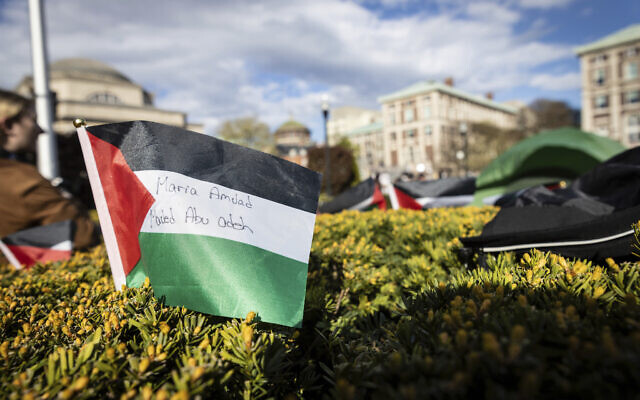The poetic goodness of pomegranates
A father-and-son pair of organic fruit farmers talk about the whys, wheres and hows of the country’s best Rosh Hashanah fruit
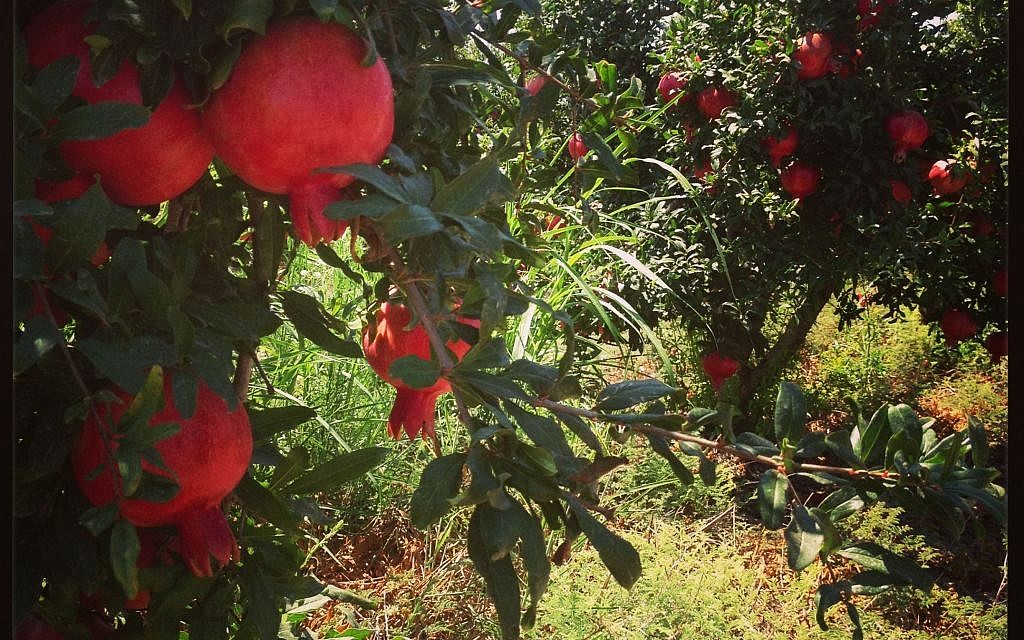
Pomegranate season has arrived, although, in truth, the glossy pink and red globes began appearing back in July, when the first varieties of this ancient fruit, rich in seeds and good-for-you antioxidants, replaced the coral-colored bell-shaped flowers that grow on each pomegranate tree.
It’s the time of year that grower David Menachem — who established Melo Hatene, an organic farm in Karmei Yosef, a communal settlement between Ramle and Rechovot — waits for impatiently.
“There’s nothing like that first pomegranate, especially when you haven’t had one in months,” said Menachem, who began farming his 40 dunam of land back in 1985, now run by his son, Hilaf. “You open it up, and wow.”
The Menachems came by their organic farming almost accidentally. They had decided to grow a wide variety of fruits, and knew it would be impossible to use a wide mix of chemicals on the different trees, choosing instead to go organic, and protect their trees by covering each one with a fine layer of mesh that keeps out pesky birds, bugs and moths.
They now grow 84 kinds of fruit, including 18 kinds of pomegranates, as well as olives, passionfruit, mango, a dozen types of berries and some more esoteric fruits, such as gooseberries, tucked inside tiny leaf pockets and the Eretz Israel plum, a miniature stone fruit eaten by the handful. But right now, it’s all about the pomegranate.
This week, the top five things you may have never known about pomegranates.
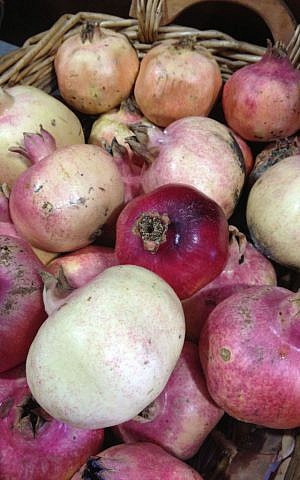
1) The first pomegranate of the season is the ‘Rosh Pered’, or Head of a Mule, which is the classic pomegranate, pinkish in tone, and filled with hard, sweet seeds. The thing is, said Menachem, the Rosh Pered gives pomegranates a bad name, because of the hard-to-chew seeds that are somewhat indigestible. Most people prefer the ‘Wonderful’ pomegranate, an American variety, which is ruby red in tone and with soft seeds that have a sour-sweet flavor. “It’s the color of it, that gets everyone,” said Menachem. “It’s red in and out, and the seeds are that deep red tone.”
2) For David Menachem, it’s all about one particular pomegranate, the Melissi, a whiteish green variety with pale pink seeds that are surprisingly sweet. It’s the one that many people think of as the red pomegranate’s pale, sickly cousin when they see it in the store or on the tree, but the fact is, said Menachem, it’s the best of the bunch. He loves it so much that he heads to a particular moshav each year, where one particular tree always has the best Melissi pomegranates, “sweet as sugar,” he said. Of course, there was the time that he fell into a nest of Sabras, or prickly fruit, as he reached for one particular Melissi pomegranate dangling just out of reach, emerging half an hour later with a back full of prickles. But, he said, it was well worth it.
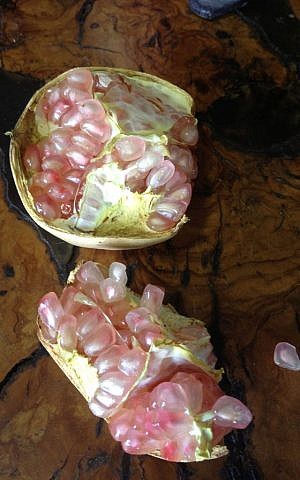
3) In fact, pomegranates, figs and Sabras, as they’re known here, for their famously Israeli characteristics (prickly on the outside, soft on the inside), all grow in the same environments, wherever there’s a lot of water. That’s why you often see all three trees growing next to riverbeds or streams. “The pomegranate has to be watered at set times,” said David Menachem, “the same time each day, a little bit of water all the time.” At Melo Hatene, where the soil isn’t of the best quality, the Menachems feed it with a rich compost element, and have the watering systems set just so, in order to offer their fruit the best conditions, added Hilaf Menachem.
It’s the natural elements that create the best pomegranates, added Hilaf. “People don’t know that you really shouldn’t eat the sprayed pomegranates that you find in the supermarket,” he said. “You need to protect pomegranates from moths that burrow into them while on the tree, but if you spray, it gets into the fruit, it gets into the very trunk of the tree.”
4) What’s the best way to peel a pomegranate? Given the fear of being sprayed with the red juice of the seeds, there are those who slice it in half and place the cut half in a bowl of water, taking out the seeds underwater. If that’s been your method, forget about it, said Menachem. Cutting the pomegranate with a metal knife ruins the seeds, and the contact with metal detracts from the fruit’s wondrous antioxidants and vitamins. Instead, he said, demonstrating with a Melissi sitting on the table, cut it like an orange, slicing off the crown, and then, making four parallel cuts from top to bottom, peel it like a citrus fruit, exposing the seeds inside.
4) We’ve all read about the wondrous, health benefits of pomegranates, with antioxidants and vitamins that help relieve everything from stomach upsets and hot flashes to blood pressure and cholesterol, but what’s not often known is that the biggest bang comes from the inside of the peel, said David Menachem, pointing to the yellowish pith and membrane cradling the seeds. It’s often bitter in flavor, which is why drinking pomegranate juice is always a good option, as it often works in some of the peel, masking its bitter flavor in the sweetness of the juice. Although, not surprisingly, the pith of the Melissi, said the elder Menachem, isn’t as bitter as that of the Rosh Pered or Wonderful.
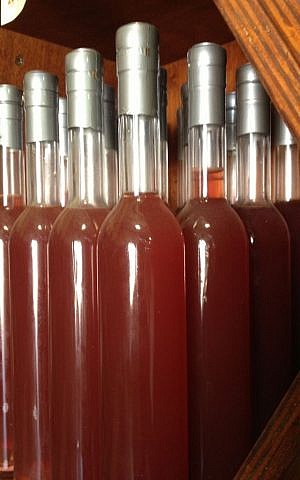
“People don’t love pomegranates, because they eat the bitter ones,” said Menachem. “They just taste a little on Rosh Hashanah, for the tradition. If they ate the sweet ones, they’d be a lot happier. I eat at least one pomegranate a day.”
5) For the Menachems, it’s not just about the pomegranates, although they’ve been making pomegranate wine — and now vinegar and extract — for years, starting with David Menachem’s father who used to make it for family and friends. At Melo Hatene, they currently have apricot, plum and grape vinegars, several kinds of honey fresh from their own hives, olive oil pressed from Melo Hatene trees and techina. People can come and pick fruit in the summer months (NIS 45 per person for picking and tours), from May through July, and then stop in at the converted packing house where Hilaf serves a great cup of their home-grown coffee, served with their homemade halva or some of a wonderfully sticky, sweet sesame treat. For snacks, there are also raw almonds roasted with a tangy teriyaki sauce, or lightly coated with cocoa or coffee. People use Melo Hatene like a supermarket, said Hilaf, stocking up on honey, vinegars, techina and dried fruits (which include plump figs still attached to the twine from which they were dried.)
And, of course, pomegranates. Happy New Year.
Melo Hatene, Karmei Yosef, Gezer Regional Council, open Sunday-Thursday and Saturday, 10:30-5; Friday, 10:30-3, call 08-979-7039, 050-799-0097 for more information.
Are you relying on The Times of Israel for accurate and timely coverage right now? If so, please join The Times of Israel Community. For as little as $6/month, you will:
- Support our independent journalists who are working around the clock;
- Read ToI with a clear, ads-free experience on our site, apps and emails; and
- Gain access to exclusive content shared only with the ToI Community, including exclusive webinars with our reporters and weekly letters from founding editor David Horovitz.

We’re really pleased that you’ve read X Times of Israel articles in the past month.
That’s why we started the Times of Israel eleven years ago - to provide discerning readers like you with must-read coverage of Israel and the Jewish world.
So now we have a request. Unlike other news outlets, we haven’t put up a paywall. But as the journalism we do is costly, we invite readers for whom The Times of Israel has become important to help support our work by joining The Times of Israel Community.
For as little as $6 a month you can help support our quality journalism while enjoying The Times of Israel AD-FREE, as well as accessing exclusive content available only to Times of Israel Community members.
Thank you,
David Horovitz, Founding Editor of The Times of Israel



